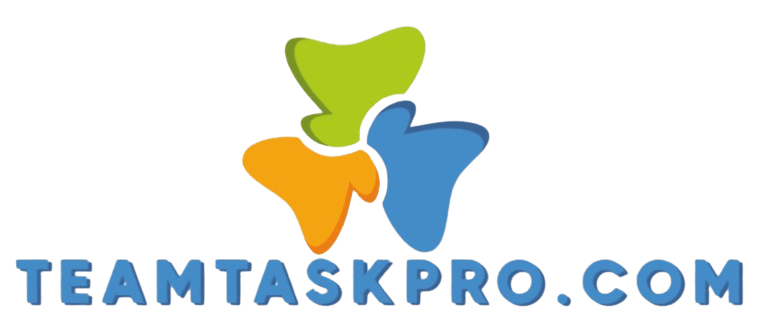developing a reporting strategy for projects
Effective project reporting is essential for the success of any initiative. It ensures that your teams remain aligned and stakeholders are kept in the loop.
This article delves into the essentials of project reporting, exploring its purpose and the key elements that contribute to a robust reporting strategy. Get ready to discover how to identify stakeholders, define metrics, create templates, and evaluate effectiveness, guiding you through each step of the process.
Whether you re new to project management or looking to refine your approach, this overview will provide the insights you need to elevate your reporting practices to the next level.
Contents
- Key Takeaways:
- Understanding Project Reporting
- Key Elements of a Reporting Strategy
- Creating a Reporting Plan
- Implementing the Reporting Strategy
- Evaluating and Improving the Reporting Strategy
- Frequently Asked Questions
- What is the importance of developing a reporting strategy for projects?
- How do you determine the frequency of reporting in a project?
- What are the key components of a reporting strategy for projects?
- How can a reporting strategy help mitigate risks in a project?
- What are some common challenges in developing a reporting strategy for projects?
- How can a reporting strategy improve project performance?
Key Takeaways:

Establish clear communication channels with key stakeholders to ensure effective reporting throughout the project. Consider establishing a reporting cadence for projects that includes specific goals, metrics, and templates to track progress and measure success. Continuously evaluate and improve the reporting strategy by collecting feedback and adapting to changes and challenges.
Understanding Project Reporting
Understanding project reporting is essential for you as a project manager or team member. It covers vital aspects like project tracking, stakeholder communication, and transparent reporting, all of which are key to ensuring project success.
Effective project reporting acts as the backbone of your project management efforts. It delivers insights into progress, budget constraints, and milestones. To enhance your reporting skills, consider exploring the art of crafting compelling project reports. This information ultimately helps you align with organizational strategies and achieve strategic goals.
Using tools such as Quickbase, ClearPoint, and Excel empowers you to streamline your project reporting, establish a robust communication framework, and enhance information sharing among stakeholders.
Defining Project Reporting and Its Purpose
Project reporting involves the careful gathering and sharing of information that relates to tracking your project’s progress, performance indicators, and overall health. This process is designed to provide you with actionable insights that are invaluable for both you and your stakeholders.
This vital practice serves several purposes. It enhances your decision-making capabilities and builds trust within your team. You ll encounter various types of reports like project health reports, budget reports, and status updates that offer unique perspectives on how your project is faring.
By regularly reviewing these reports, you can spot potential risks and bottlenecks early on. This allows for timely interventions that keep everything on track. Tracking performance through key performance indicators (KPIs), which help measure success, enables you to assess not only the financial health of your project but also its adherence to schedule, effective resource allocation, and overall team efficiency.
In essence, effective project reporting acts as a cornerstone for your project s success. It aligns the objectives of all stakeholders and promotes transparency throughout the entire project lifecycle.
Key Elements of a Reporting Strategy
A robust reporting strategy is essential for effective project tracking. This involves several key elements, including aligning reporting with project goals.
- Identify your key stakeholders;
- Establish a comprehensive communication framework;
- Determine the optimal reporting cadence.
By doing so, you keep everyone informed and engaged throughout the process, ensuring that project updates are delivered on time.
Identifying Key Stakeholders
Identifying key stakeholders is crucial as a project manager. It ensures that all relevant parties are engaged and informed throughout the project lifecycle, which is critical for securing project success.
When you involve team members, you foster collaboration and encourage valuable input that can enhance project outcomes. Meanwhile, executives provide necessary oversight and direction, helping to align the project with strategic goals.
Don t overlook the significance of external partners; their resources and expertise are vital, making their involvement equally important. Effective communication among these diverse groups not only mitigates risks but also optimizes resource allocation, ensuring that timelines remain on track.
By recognizing and addressing the interests and influences of each stakeholder, you can cultivate a supportive environment that ultimately drives the project toward its objectives.
Determining Frequency and Format of Reports
Determining the frequency and format of your reports is crucial for delivering project updates consistently and effectively. This approach allows people involved to track performance indicators and gauge the overall health of the project.
To establish an effective reporting cadence, consider the complexity of the project and the specific needs of the team members involved. For instance, if you re managing a more intricate project, bi-weekly updates with detailed reports featuring visual progress markers may be necessary. On the other hand, simpler initiatives might only require monthly summaries.
Transparent reporting builds trust and fosters open communication among team members, which is essential for addressing issues proactively. By integrating best practices like using standardized templates and project tracking tools you can streamline the process significantly, ensuring that all relevant information is organized and easily accessible for well-considered choices.
Establishing Communication Channels

Establishing effective communication channels is crucial for ensuring that you share project updates and information seamlessly among all team members throughout the project lifecycle. Timely updates are vital to project success.
Emails provide a reliable way to share important documents and decisions, creating a record that you and your team members can refer back to whenever needed.
Project management tools bring an organized structure to the table, facilitating collaboration and enabling everyone to track progress, deadlines, and deliverables.
By integrating these diverse methods, you can enhance engagement, promote transparency, and ultimately drive the success of your project.
Creating a Reporting Plan
Crafting a reporting plan is an essential milestone in project management, as it aligns your project objectives with the right metrics and Key Performance Indicators (KPIs). Understanding the relationship between reporting and project success can further enhance your strategy.
This approach gives you the power to effectively monitor progress and communicate results with clarity and precision.
Setting Goals and Objectives
Setting clear goals and objectives is essential for ensuring that you can measure project success and align it with your organization’s overall strategy. Use the SMART framework to define specific metrics that will reflect your progress and accountability.
This means pinpointing objectives that are not only precise but also quantifiable, making it straightforward to track your advancements.
Achievability is another crucial element; it’s important to ensure these ambitions are realistic given your available resources. Relevant goals should resonate with your broader organizational aims, creating a cohesive strategy that drives your overall mission fulfillment.
Incorporating time-bound deadlines instills a sense of urgency and encourages consistent engagement, ultimately leading to enhanced performance indicators that effectively gauge success throughout the project’s duration.
Defining Metrics and KPIs
Defining metrics and Key Performance Indicators (KPIs) is crucial for you to track project performance and generate actionable insights that guide your decision-making throughout the project lifecycle.
By establishing clear and relevant metrics, you can effectively assess the progress of your initiatives and pinpoint potential areas for improvement. This thoughtful selection not only enhances your visibility into operational processes but also fosters a sense of accountability among your team members.
Aligning these performance indicators with your overall project goals ensures that your efforts are directed toward achieving strategic objectives.
As a result, your ability to measure outcomes against predefined benchmarks gives you the power to make informed adjustments, ultimately enhancing your project management effectiveness and driving successful results.
Establishing Reporting Templates
Establishing standardized reporting templates significantly enhances the clarity and consistency of your project reporting. This allows you to convey essential updates and insights with ease.
These templates act as a dependable framework, streamlining communication among your team members and stakeholders. By employing a consistent structure, you reduce confusion and minimize the risk of misinterpreting data.
Often, these templates include intuitive data visualization tools, making it simpler for non-technical audiences to quickly grasp complex information. This not only promotes transparency but also encourages stakeholder engagement, enabling them to easily track progress and understand key performance indicators.
Ultimately, leveraging reporting templates gives you and your team the power to produce comprehensive reports that facilitate well-considered choices and bolster project success.
Implementing the Reporting Strategy
Implementing your reporting strategy demands a focused approach to achieve consistency and accuracy in your reports. Additionally, understanding the role of reporting in strategic project planning is equally important to remain adaptable to any changes and challenges that may arise throughout the project delivery process.
Ensuring Consistency and Accuracy

Ensuring consistency and accuracy in your project updates is essential for maintaining stakeholder trust and achieving success through reliable reporting practices.
To facilitate this, consider using automated tools to streamline your reporting process. This allows you to concentrate on meaningful analysis instead of getting bogged down in manual data entry.
Using project management software allows you to track progress in real time, so your team can swiftly address any deviations from the original plans. Regular data verification becomes crucial; it helps you identify discrepancies early on, significantly reducing the risk of misinformation.
By adopting best practices such as establishing standardized reporting templates and holding periodic review meetings you create a culture of accountability and transparency throughout the project lifecycle.
Adapting to Changes and Challenges
Adapting to changes and challenges throughout the project lifecycle is vital for ensuring effective delivery and maintaining ongoing stakeholder engagement. This flexibility not only streamlines your daily operations but also aligns seamlessly with the evolving needs of your clients and team members.
By using robust project management tools like Asana or Trello, you can quickly reassess priorities and allocate resources with precision.
Using Agile methods helps your team respond quickly to changes, giving you the power to pivot strategies when unforeseen circumstances arise.
This proactive approach helps your team respond quickly to challenges while upholding the highest standards of quality and communication.
Evaluating and Improving the Reporting Strategy
Evaluating and enhancing your reporting strategy is an ongoing endeavor. It requires you to gather feedback from stakeholders while simultaneously measuring the effectiveness of your reporting practices against project performance. For guidance, consider exploring how to create effective project reports.
Embracing this iterative process will give you the power to refine your approach and elevate the impact of your reports.
Collecting Feedback and Making Adjustments
Collecting feedback from stakeholders is essential for making necessary adjustments to your reporting strategy and enhancing the quality of your project updates.
You can effectively gather this feedback through various methods, such as surveys, interviews, and focus group discussions.
Engaging stakeholders in constructive dialogue not only cultivates a sense of ownership but also ensures their insights are directly integrated into your reporting process.
Make sure to align the feedback with established performance indicators and overall project objectives, ensuring that any adjustments made are both purposeful and relevant.
By doing so, you create a more transparent and effective communication channel that fosters continuous improvement and ultimately drives your project toward success.
Take charge now! Implement these strategies to enhance your reporting effectiveness.
Measuring the Effectiveness of the Strategy
Measuring the effectiveness of your reporting strategy means evaluating performance against Key Performance Indicators (KPIs). This ensures that your project’s success is conveyed accurately.
You can approach this evaluation through qualitative and quantitative assessments. This gives you a full view of your strategy s impact.
For quantitative metrics, analyze data trends, reporting frequency, and any variances from planned performance indicators. These numbers help gauge success effectively.
Qualitative assessments include gathering stakeholder feedback and conducting interviews to understand the story behind the numbers.
By combining these methods, you achieve a well-rounded perspective. This not only highlights areas for improvement but also confirms the strengths of your reporting efforts.
Frequently Asked Questions
What is the importance of developing a reporting strategy for projects?

A reporting strategy helps project teams track progress and identify potential issues, and it is essential for using reporting to manage project risks. It also ensures accountability and transparency throughout the project.
How do you determine the frequency of reporting in a project?
Determine reporting frequency based on project complexity, duration, and stakeholder expectations. Finding the right balance is crucial, as timely updates prevent distractions.
What are the key components of a reporting strategy for projects?
A reporting strategy typically includes the format, data sources, metrics, frequency, distribution method, and escalation process. It should also clarify the roles of team members involved in reporting, especially considering the future of reporting in project management.
How can a reporting strategy help mitigate risks in a project?
Regular reporting allows project managers to spot potential risks early. It also keeps stakeholders informed, enabling prompt feedback to tackle emerging issues.
What are some common challenges in developing a reporting strategy for projects?
Challenges include setting clear reporting expectations and ensuring data accuracy. Regular reviews and updates to the strategy help address these challenges.
How can a reporting strategy improve project performance?
A reporting strategy provides valuable insights, helping project teams make informed decisions. Learning how to create a reporting timeline for projects promotes accountability and transparency, boosting motivation and enhancing project performance.





